
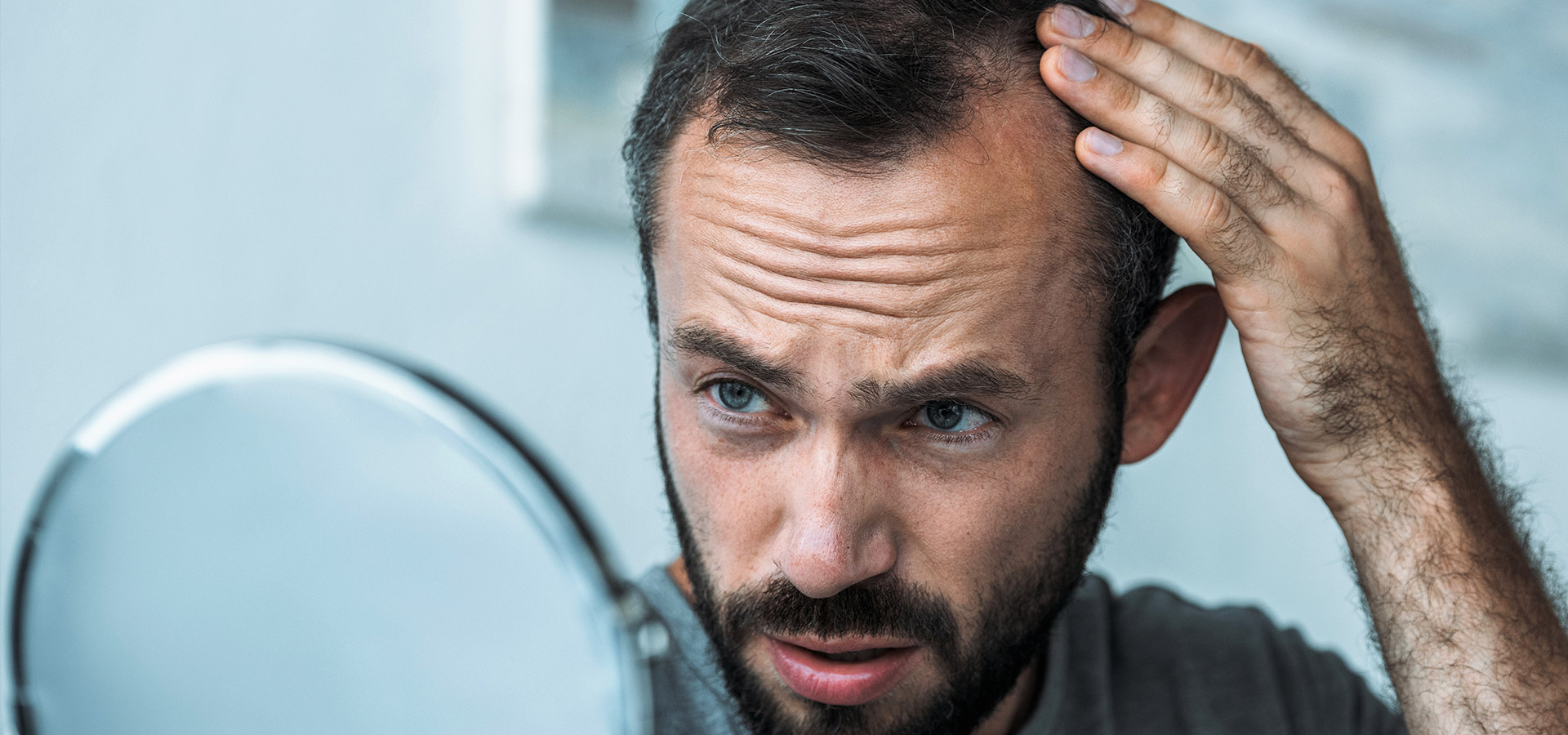
Alopecia
Alopecia represents the decline and loss of hair from the head and other parts of the body. This aesthetic problem most often involves hair thinning or loss, and it can also cause mental disorders with some people. 70% of people who are affected by alopecia are men and it comes in multiple forms.
Androgenic alopecia
The main cause of this type of hair loss is the stimulation of hair follicles by male sex hormones (androgens) and it mostly occurs in men. The main symptoms of androgenic baldness are hair loss without any changes to the scalp. With women, this form of alopecia is less common and occurs much later on.
Androgenetic alopecia is a common form of hair loss with both men and women and can affect younger and older people. It's genetically predisposed, which means that one person was definitely the carrier of hair loss genes in one family. In men and women, this is associated with an excessive amount of male hormones (androgens) around hair follicles, which can block hair growth. Women are more likely to develop androgenic alopecia after menopause when they have less female hormones. The most common hair loss is due to androgenic alopecia. Approximately 50% of men under 50 and 15% of women before menopause, have a certain degree of androgenic alopecia
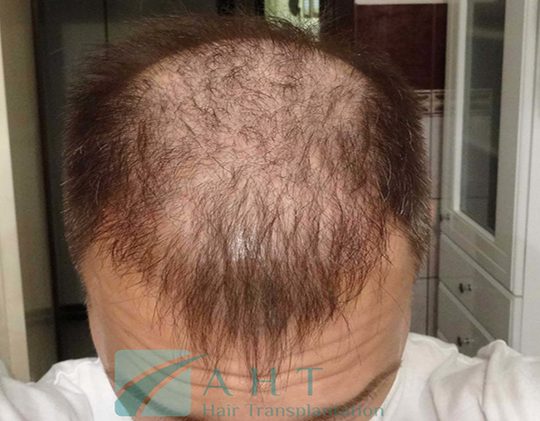
Androgenic Alopecia
Charateristic shape of the letter "M"
The whole region of the head can be affected by this process, but it is common only for specific regions where the hair is thinner and eventually declining.
Men who have hair thinning in the front region of the temples, which is pulling back to the "crown" have a typical form of androgenic alopecia. Women usually have diffuse thinning on the surface of the crown. Over time, the hair recedes in such a way to form a characteristic shape of the letter "M" toward the crown. Sometimes this stage stops but often progresses to partial or complete baldness, except in the side and donor part.
Androgenic alopecia in men may be associated with several other health conditions including coronary heart disease and prostate enlargement.
Alopecia areata (Circular hair loss)
Circular hair loss occurs when white blood cells attack hair follicles, causing them to become reduced, and hair growth is slowed down or completely interrupted. The most common causes of this disease are infections of the oral cavity, inflammation of the tonsils and rotten teeth. Alopecia areata is the appearance of clearly limited circular or oval areas without hair. It can last for several weeks, up to ten months, after which recovery ensues. Unfortunately, the condition often reoccurs and can cause complete baldness.
Alopecia areata, or spot baldness, or the loss of hair in round patches, is a reversible loss of hair in a limited area. This problem can last a few weeks, up to a year, after which a recovery can be made. Unfortunately, it often reoccurs and can cause complete baldness.
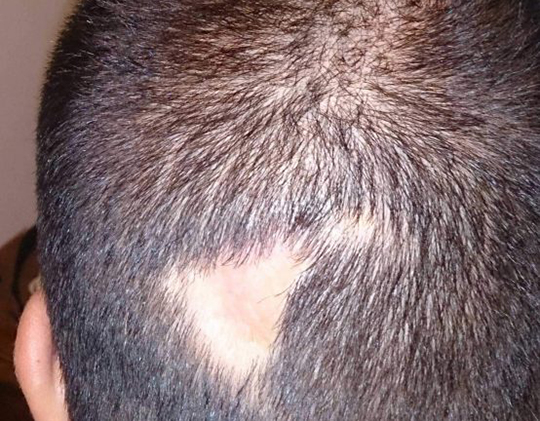
Alopecia Areata
Although it is not fully explained what causes this condition, the most common cause is the genetic predisposition. Hair loss in patches can also occur as a result of emotional stress, persistent tension and disordered dieting. Alopecia areata occurs suddenly in the form of round patches of different sizes and localities without hair. Usually, the first affected areas are 1 cm in diameter up to the size of the palm.
It develops by switching from the active growth phase to the follicular rest phase, followed by hair loss. In addition to this disease, there are also changes in nails - dents and longitudinal furrows, and there are no other changes to the body. It can last from several weeks, up to several months, and is characterized by recidivism. Primarily affected areas can again grow hair after a few months, but new ones usually occur. In the center of the affected area, the hairs that start to grow again are thinner and brighter, and in time they get darker. In rare cases, hair never grows back. It is recommended to go to a clinic that deals with this problem, and according to the doctor's assessment, apply a therapy.
How to treat alopecia areata?
In the treatment of alopecia areata, corticosteroid fats are applied under an occlusive dressing that enhance the vascularization of the hair follicle. If this treatment does not produce results, corticosteroids are applied with an intralesional method. Hair regrowth can be expected in six to seven weeks, and if no results are seen, systemic administration of corticosteroids is indicated. Also, cryotherapy, UV rays, vasodilators, vitamins of group B vitamins can also be used in the treatment.
Alopecija Totalis
Alopecia totalis most commonly occurs in two forms. First one is the sudden and complete loss of hair and eyebrows, the other one is slower and begins as alopecia areata and progresses to a complete loss of hair. This condition occurs in children and people under the age of 40, has no effect on life expectancy and
does not prevent you from living a normal life.
Alopecia totalis is a complete loss of hair while the body's hair is preserved. It can start in the form of round patches that spread rapidly. It is malignant alopecia and hair, in rare cases, begins to grow again.
What causes Alopecia Totalis?
This condition occurs as a result of an autoimmune disorder that causes your immune system to affect hair follicles. The cause of this condition remains unknown to this day and it is the subject of a lot of debate. As time progresses, we come to more knowledge about this condition, but we are still far from a cure or preventative solution.
How to treat Alopecia Totalis?
Available treatments are usually not effective for severe forms of the condition, such as Alopecia Totalis. Corticosteroids, in the form of an injection or tablet, are a common treatment, although they are often not effective. If they work, they cannot be used in the long run because they have potentially dangerous side effects.
Doctors sometimes recommend short-term "pulse steroid therapy". It is a therapy that was first used to treat acute rejection after kidney transplantation in 1973. It has been used in dermatology for the treatment of various severe inflammatory disorders.
Sometimes it was treated with Diphenylcyclopropenone (DPCP), which is considered to help some individuals with Alopecia Totalis. It is a dermal treatment, which means it is applied topically to the skin. It is applied once a week in a clinic or a hospital. It is a chemical that causes an allergic reaction, which in turn can stimulate hair growth.
Alopecija Univerzalis
Alopecia universalis represents the most severe form of the condition that causes hair loss throughout the body. Like alopecia totalis, this form of illness is malignant alopecia. In addition to hair loss, alopecia universalis can also lead to changes in nails, which in this case are ridged with fissured edges, and cataracts may also occur. People who suffer from alopecia totalis have pale and sagged skin.
Alopecia universalis is an advanced form of alopecia effluvium (AE), and both are immune disorders. In both cases, the immune system incorrectly identifies the follicle. It recognizes the follicle as a foreign body and therefore sends white blood cells to attack. When the hair follicle is damaged by the supply of blood, the hair no longer has enough food for growth. The basic difference between AU (Alopecia Universalis) and AE (Alopecia Effluvium) is the degree of hair loss. In some cases, AU may be associated with other conditions such as atopic dermatitis, thyroid disorder or nail changes (such as tingling). Atopic dermatitis is a long-term (chronic) skin disorder that includes dry skin and itching of the skin. It represents a type of eczema.
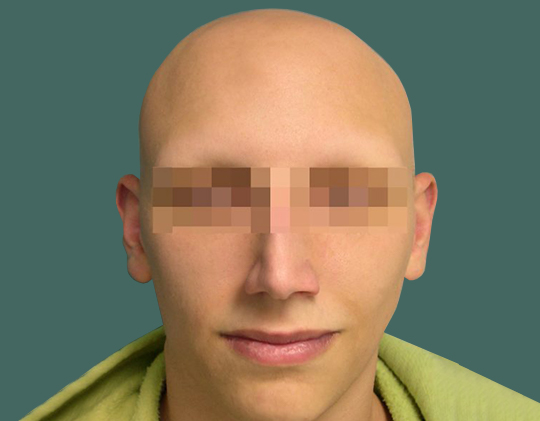
Alopecia universalis
What causes Alopecia Universalis?
The exact cause of AU is unknown. In one report, researchers studied a family which had a child with Alopecia Universalis in three consecutive generations. They found a specific gene marker (8p12), for which they believe to be the gene that controls hair loss, in all children. This points to the fact that the cause of AU could actually be hereditary.
Is there a cure for Alopecia Universalis?
For now, there is no reliable cure for AU. The treatments often include immunotherapy, which purposefully causes an allergic reaction on the skin which in turn can stimulate hair follicles to regrow new hairs. The rate of success is not high although there is a chance of improvement.
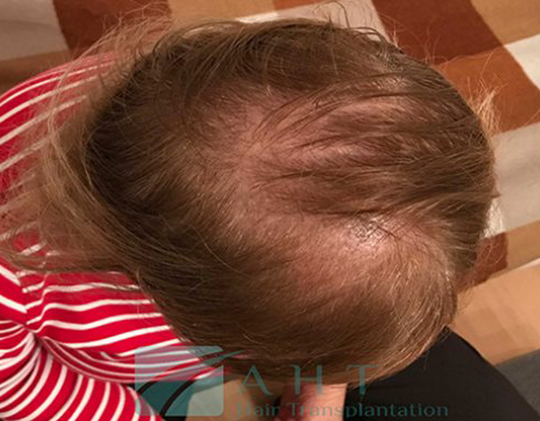
Diffuse Alopecia
What causes Diffuse Alopecia??
Diffuse Alopecia is a type of androgen alopecia which is caused by the male hormone - androgen. In this case, Dihydrotestosterone is responsible for hair loss and it is a byproduct of enzymatically metabolized testosterone with 5 alpha reductase enzyme. DHT is accumulated in hair skin where it can negatively affect the hair follicle only if the carrier is genetically sensitive to DHT hormone. Not everyone is sensitive to the DHT hormone, but if the sensitivity is present, DHT prevents the access to nutrients for the hair follicles, disrupting blood flow.
Disrupted blood flow causes the shrinking of follicles (better known as miniaturization). Diffuse Alopecia causes the growth of new hairs which get thinner and fall out. In comparison to the atypical diffuse alopecia, the donor area of persons with diffuse alopecia is not affected and can be used for transplantation. Due to that, people with diffuse alopecia are candidates for follicle extraction and follicular procedure.
Diffuse alopecia (DPA)
Diffuse Alopecia (DPA) is a type which is demonstrated by overall hair thinning on the head rather than complete hair loss. DPA condition doesn’t mean that hair is falling off, but becoming thinner It affects the entire head except for the donor area.
What are the symptoms of Diffuse Alopecia?
This condition comes with hair thinning which is similar to common hair loss in men (Male Pattern Hair loss). What is more, this is a condition of hair loss that matches the Norwood/Hamilton hair loss scale, which shows general conditions and stages of hair loss. The difference between these two stages is that diffuse alopecia denotes only hair thinning on the head.
What are the available treatments for Diffuse Alopecia?
The progress of diffuse alopecia can be reduced with a therapy that stimulates hair growth, such as Finasteride and Minoxidil. Finasteride prevents the enzymatically metabolized testosterone with 5 alpha reductase enzymes to enter DHT and slows down and stops the DPA process.
Minoxidil thickens the hair follicle (giving the impression of better density) and makes the hair follicles enter longer anagen phases (growth phases). Those who are affected by diffuse alopecia have a good reaction to the conventional transplantation procedure.
Diffuse Atypical Alopecia (DAA)
This is a subtype of hereditary hair loss or androgen alopecia. This condition can affect both men and women. We will focus on diffuse atypical alopecia (DAA) in men and why it is important to differentiate it from other types of hair loss. In order to understand DAA, it is important to understand typical hair loss in men as well. Around 2-6% of men suffer from this type of hair loss, so it is a rare case. In patients who have this condition, hair loss occurs not only on the front and top of the head, but also on the back and both sides. In men who have DAA condition, head skin goes through the minimalization or there is a chance of it. In case of DAA, hair transplantation is not an option.
The hairs at the back of the head are not strong enough for relocation since there is a chance of minimalization. If the procedure is attempted with DAA patients, it might look good for a couple of years but with a high probability of hair loss with time. The only therapy for DAA are medicaments:
- Minoxidil 5%,
- Finasteride,
- Low level of laser treatments
- Platelet Rich Plasma.
How is diffuse atypical alopecia differentiated from regular alopecia??
Diffuse atypical alopecia (DAA) usually appears at the side and back of the head first, unlike the common hair loss in men, which appears at the back of the head and the frontline. In initial phases, DAA resembles common hair loss, but it quickly turns into massive hair loss. DAA does not belong to traditional hair loss cases and it mostly affects the density of hairs unlike complete hair loss. As such, it cannot be presented by the Hamilton/Norwood scale which shows the most common cases of hair loss.
Senescent or Senile Alopecia
This type of hair loss is usually met in men older than 70. This condition causes evenly distributed or diffuse hair loss.
Doctors can hardly diagnose this type of hair loss due to the fact that the cases are very different, so there is currently no patent or model by which research could be done.
Hamilton - Norwood Scale
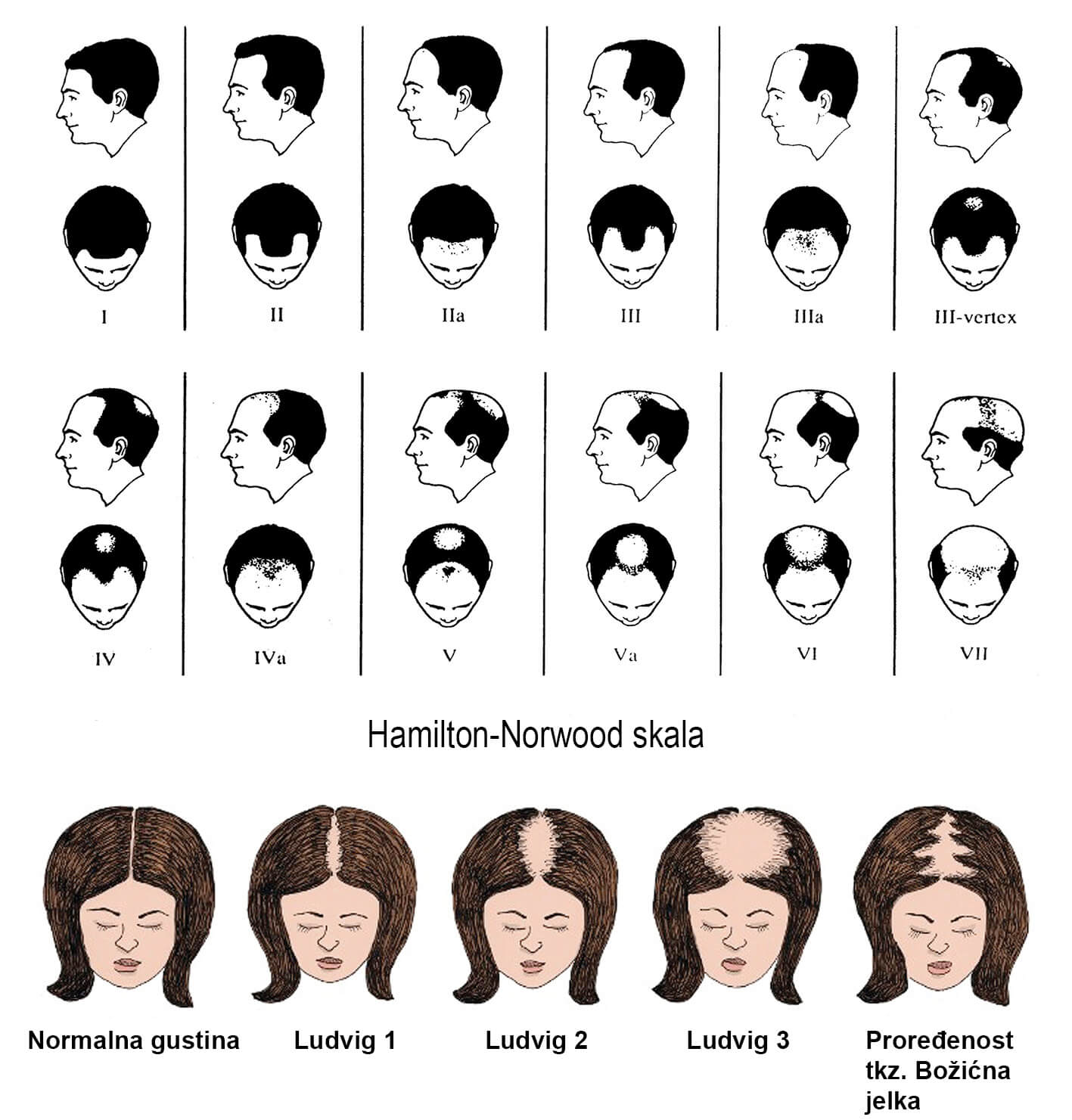
The Norwood Scale is a part of a classification system for male baldness progression which goes from first to the seventh degree. At the same time, it represents a group of images of various phases of hair loss. The measurement scale was first devised by Dr. James Hamilton in 1950s. Later, it was revised by Dr. O'Tar Norwood in 1970s.
Stages
- Stage 1. No significant hair loss or recession of the hairline.
- Stage 2. There is a slight recession of the hairline around the temples.
- Stage 3. The first signs of clinically significant balding appear.
- Stage 3 vertex. There is significant hair loss on the top of the scalp (the vertex).
- Stage 4. The hairline recession is more severe at the top.
- Stage 5. The two areas of hair loss are larger at the temples, but they are still separated.
- Stage 6. The band of hair across the top of the head has disappeared, but a few short fine hairs might remain.
- Stage 7. The most severe stage of hair loss. Fine, short hairs at the top and front areas.












